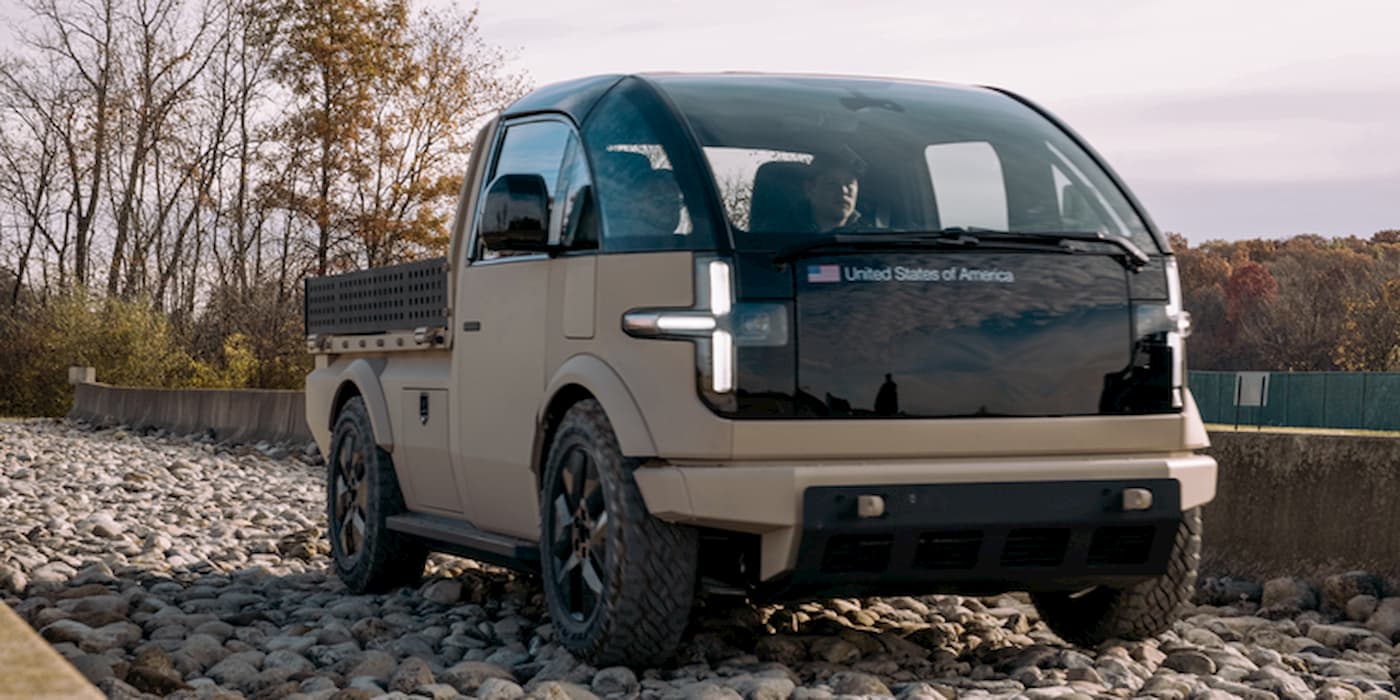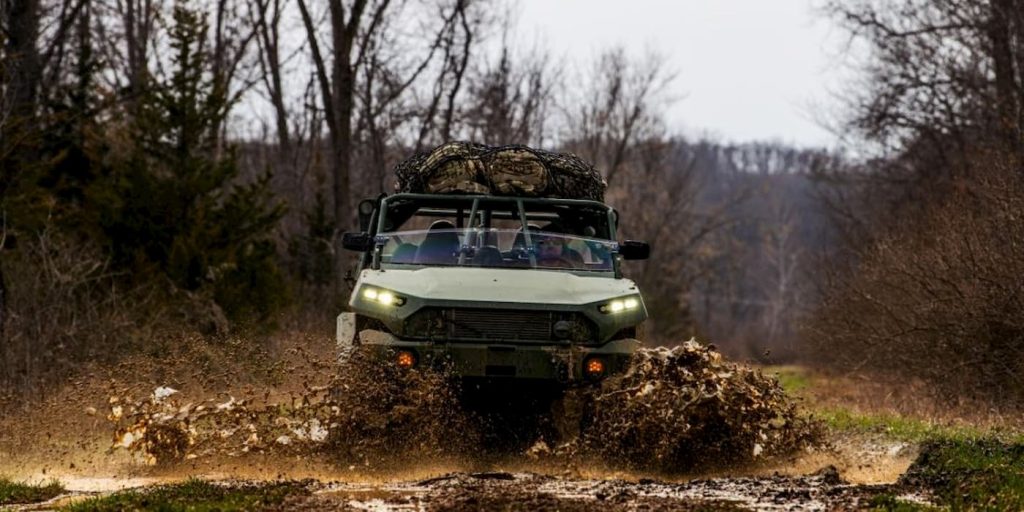
EV maker Canoo (GOEV) is on a mission to provide electric vehicles for multiple uses with its flexible Multi-Purpose Platform. Canoo announced today it has officially delivered its Light Tactical Vehicle (LTV) EV based on the platform to the US Army.
Meanwhile, the military implementing electric vehicles can do more than protect the planet from climate change.
Founded in 2017, Canoo has overcome several hurdles in bringing its “use case” EV platform to market.
With nearly $1 billion in investments and over 250 patents, Canoo’s Multi-Purpose Platform was born. Despite the technological advancements, Canoo was running out of funds, expressing “substantial doubt” in its ability to continue operations.
Canoo quickly secured a purchase agreement with Walmart to provide at least 4,500 EVs in exchange for exercisable warranted shares, giving the company a lifeline.
The company’s “Made in America” approach has positioned it well to benefit from the incentives provided by the recently passed Inflation Reduction Act. After choosing a 630,000-square-foot facility in Oklahoma City, Canoo says it’s ready to begin commercial production.
The company’s Multi-Purpose Platform is finding plenty of “use cases” outside of the typical commercial customers.
NASA recently chose Canoo’s proprietary EV platform to transport crew members to the Artemis launch pad. Yet the EV makers platform is capable of more than just transporting from point A to B, as the US Army has given Canoo another opportunity to showcase its technology.
Canoo supplying electric vehicles for the US Army
In July 2022, the US Army tapped Canoo to supply an EV for analysis and demonstration. The partnership comes after the US Army released a new climate strategy in February, including implementing electric vehicles to lower climate emissions.
The American EV maker announced today it has successfully delivered its Light Tactical Vehicle to the US Army, fulfilling its initial contract terms. CEO Tony Aquila commented on the achievement, saying:
The LTV is another milestone proving the power of our technology and how it can be used, even in tactical situations.
Canoo’s LTV comes loaded with an all-wheel drive system delivering up to 600 hp. To support off-road driving, the LTV features a raised suspension, air-springs, and 32-inch all-terrain tires.
Many are wondering – can electric vehicles make a difference?

How the US Military can benefit from deploying electric vehicles
Canoo isn’t the only automaker supplying electric vehicle technology for military use. GM Defense, the advanced defense mobility innovation unit of General Motors, was selected by the Defense Innovation Unit (DUI) to develop a battery pack that can power functional electric military vehicles.
The DIU is a unit of the Department of Defense specializing in “strengthening our national security by accelerating the adoption of leading commercial technology throughout the military.”
Electric vehicles offer benefits over their gas-powered peers. They’re stealthier, more powerful, and have technologically advanced options.
A recent post from the Modern War Institute at West Point highlights the US Military’s need “to take advantage of this electrification trend and follow fast in adopting the best new technologies,” offering insights into the case for electric military vehicles.
- The US Military is the largest institutional consumer of petroleum fuels globally, using up to 4.2 billion gallons of fuel annually.
- Over $9 billion was spent on fuel by the Defense Logistics Agency in 2019 (they pay a premium).
- The price of delivering fuel to remote operations can be as much as $1,000 per gallon.
- Fuel convoys are especially vulnerable to attacks. Between 2003 and 2007, one in eight casualties in Iraq were due to protecting the convoys.
We are seeing examples of how electric vehicles are already winning out over their gas-powered counterparts in the war between Russia and Ukraine. Russian military vehicles sat in a 40-mile-long convoy after a fuel logistics mishap.
Meanwhile, Ukrainian snipers used tactical electric bikes to silently sneak into their target area, engage the enemy, and quickly flee before being spotted.
The examples show electric vehicles may prove to be more beneficial in the military than many assume. EVs can save the military money on maintenance and fuel costs while providing silent, rapid transportation.
Perhaps, more importantly, it will reduce our dependence on foreign fossil fuels, which can be used to start or prolong a war.
FTC: We use income earning auto affiliate links. More.



Comments